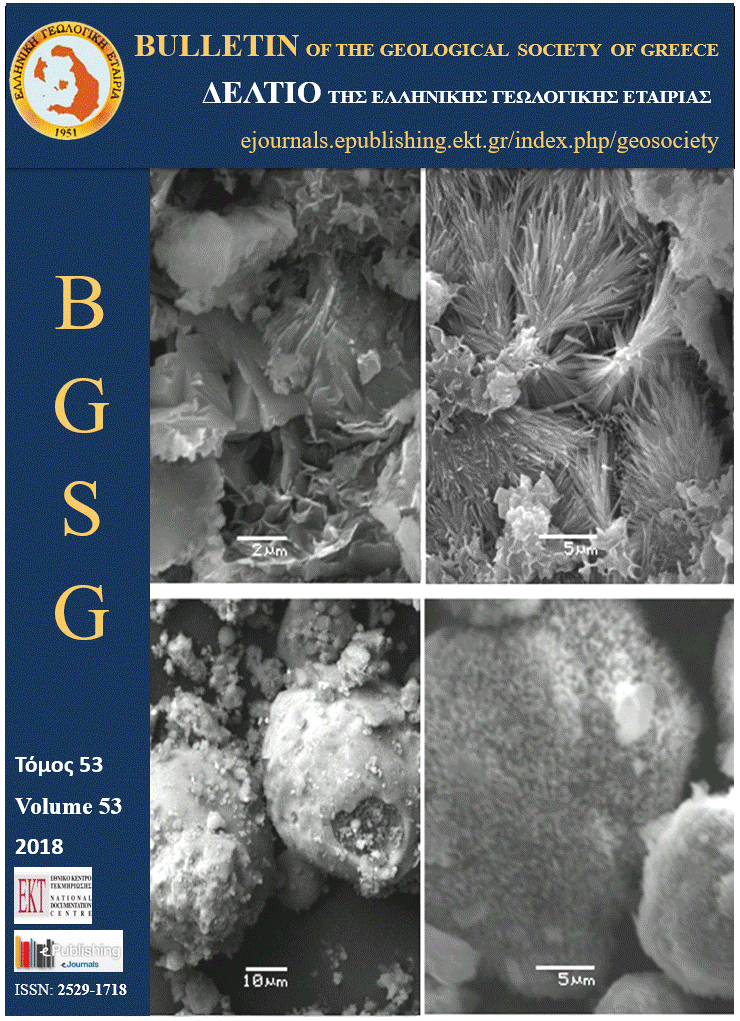REE and Gallium in the diasporite deposits of Mikri Lakka, east Samos Island, Greece

Abstract
In Samos Island, Aegean Sea, Greece, several diasporite and emery occurrences and idle mines occur. The major diasporite deposit is developed at the eastern part of the island at Mourtia, Mikri Lakka where there exist old mining works. The specific metabauxite is hosted, via a transition zone, in between marble of Mesozoic age which has been tectonically disturbed. The aim of the present study is to characterize the metabauxite deposit and to investigate its content in specific trace elements and especially REE and gallium. XRD, XRF and SEM-EDS analysis carried out in representative samples of the massive diasporite deposit, the transition zone and the associated marble. XRD analysis revealed that the marble is calcitic. The transition zone is mainly composed of muscovite, illite, kaolinite, quartz and calcite with minor amounts of diaspore, whereas the main ore body is composed mainly of diaspore, followed by minor-trace amounts of calcite, muscovite, magnetite, hematite and quartz. XRF major element analysis has shown that the ore body is rich in alumina and secondarily in iron oxides. The trace element analysis discloses a notable enrichment in Ga, some REE and zirconium. Gallium is not detected by SEM-EDS as any gallium mineral, and it is most likely being fixed in the lattice of diaspore. It is concluded that the derivation of all trace elements enrichments and the source of alumina from the Mesozoic rocks of the Ampelos Nape, which included originally sedimentary rocks, gabbro and volcanics. These rocks were weathered and altered under wet conditions releasing silica, alumina and iron, which formed bauxite deposits rest on a limestone substrate. Finally, the limestone-bauxite succession was metamorphosed and tectonically disturbed. Concerning the economic importance of the Mikri Lakka diasporite, it is noted that bauxite/diasporite deposits have a potential of hosting significant REE concentrations. The average gallium content of the Mikri Lakka massive diasporite is 79 ppm (max of 96 ppm), which is higher than the average gallium content of the bauxite deposits and occurrences of Parnassus-Ghiona-Oiti Greece. Both the REE and gallium content of the Mikri Lakka diasporite is promising to consider their recovery as byproducts during diasporite exploitation, despite the fact that its proven reserves in the east part of Samos are unknown.
Article Details
- How to Cite
-
Stamatakis, M., & Koltiri, A. (2025). REE and Gallium in the diasporite deposits of Mikri Lakka, east Samos Island, Greece . Bulletin of the Geological Society of Greece, 62(1), 1–28. https://doi.org/10.12681/bgsg.40816
- Section
- Economic Geology

This work is licensed under a Creative Commons Attribution-NonCommercial 4.0 International License.
Authors who publish with this journal agree to the following terms:
Authors retain copyright and grant the journal right of first publication with the work simultaneously licensed under a Creative Commons Attribution Non-Commercial License that allows others to share the work with an acknowledgement of the work's authorship and initial publication in this journal.
Authors are able to enter into separate, additional contractual arrangements for the non-exclusive distribution of the journal's published version of the work (e.g. post it to an institutional repository or publish it in a book), with an acknowledgement of its initial publication in this journal. Authors are permitted and encouraged to post their work online (preferably in institutional repositories or on their website) prior to and during the submission process, as it can lead to productive exchanges, as well as earlier and greater citation of published work.



